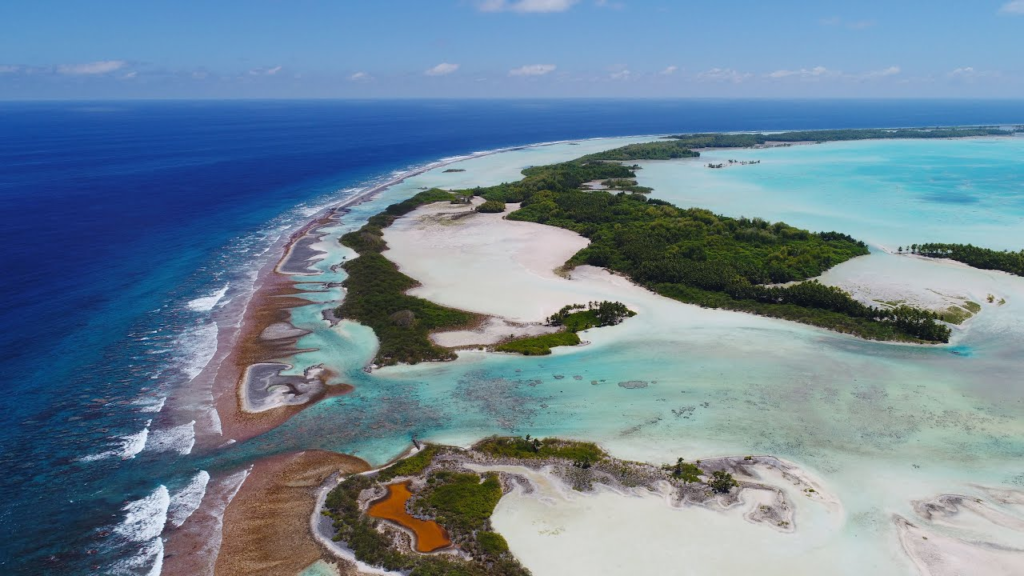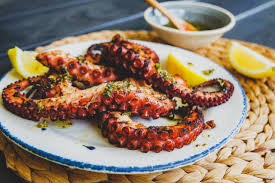Kiribati, an isolated and captivating nation in the central Pacific Ocean, is a hidden gem offering unparalleled beauty and tranquility. Comprising 33 atolls and reef islands, Kiribati spans both the equator and the International Date Line, making it a unique destination in terms of both geography and culture.
This enchanting archipelago invites travelers to experience its pristine beaches, rich cultural heritage, and serene environment. With its unspoiled natural beauty and welcoming local communities, Kiribati offers a serene escape for those seeking an off-the-beaten-path adventure.
Table of Contents
Geography
Kiribati is situated in the central Pacific Ocean, approximately halfway between Hawaii and Australia. The country consists of 33 atolls and reef islands spread across a vast area of the ocean. The total land area of Kiribati is approximately 811 square kilometers, but its territory stretches over 3.5 million square kilometers of ocean.
This vast expanse includes the Gilbert Islands, the Phoenix Islands, and the Line Islands, each offering unique landscapes and natural features. The Gilbert Islands are the most populous and include the capital city, Tarawa, located on the atoll of the same name. Tarawa is known for its bustling atmosphere and historical significance, while the other Gilbert Islands, such as Butaritari and Kiritimati, offer more tranquil settings with their pristine beaches and clear lagoons.
The Phoenix Islands, including Kanton and Nikumaroro, are renowned for their untouched natural beauty and marine biodiversity. The Line Islands, such as Millennium Island and Tabuaeran, are notable for their remote locations and spectacular coral reefs.
States of Kiribati
Kiribati does not have states in the way some countries do. Instead, Kiribati is divided into three island groups:
- Gilbert Islands
- Phoenix Islands
- Line Islands
These island groups consist of 33 atolls and reef islands, dispersed over a large area in the central Pacific Ocean. Each island or group of islands may have its own local government or council, but Kiribati as a whole is a unitary state, meaning it is governed as a single entity.
History
Kiribati’s history is deeply rooted in its Polynesian and Micronesian heritage, with the first settlers believed to have arrived over 3,000 years ago. These early inhabitants developed a complex society with rich traditions and seafaring skills, navigating vast distances across the Pacific Ocean using traditional methods. The Kiribati people have a strong cultural connection to the sea, which has played a central role in their history and way of life.
European exploration of Kiribati began in the early 19th century, with British explorer Captain Thomas Gilbert and others making initial contact with the islands. The islands were named after Gilbert by Captain Gilbert in 1788. During the late 19th and early 20th centuries, Kiribati became part of the British Empire, with the Gilbert and Ellice Islands Colony being established in 1916. The colony included both Kiribati (then the Gilbert Islands) and Tuvalu (then the Ellice Islands).
Kiribati gained independence from Britain on July 12, 1979, and became a sovereign nation. The country’s name, Kiribati, is derived from the local pronunciation of “Gilberts.” Since gaining independence, Kiribati has focused on preserving its cultural heritage and addressing challenges related to climate change, as its low-lying islands are particularly vulnerable to rising sea levels. Despite these challenges, Kiribati remains a resilient and proud nation with a rich cultural identity.
Top Ten Must-Visit Destinations
1. Tarawa Atoll

Tarawa Atoll, the capital of Kiribati, is a vibrant hub of activity and cultural significance. The atoll is known for its historical sites, including the Battle of Tarawa memorials, which commemorate the World War II battle fought here. Tarawa offers a mix of bustling markets, local cuisine, and beautiful beaches, making it a must-visit for those interested in Kiribati’s history and culture.
2. Kiritimati Island

Kiritimati Island, also known as Christmas Island, is one of the largest atolls in the world and a popular destination for its pristine natural beauty. The island is renowned for its exceptional fishing opportunities, with crystal-clear waters and abundant marine life. Kiritimati also features stunning lagoons and untouched beaches, making it an ideal spot for relaxation and outdoor activities.
3. Banaba Island

Banaba Island, also known as Ocean Island, is a significant historical and cultural site in Kiribati. The island was once a major source of phosphate, which played a crucial role in the country’s economy. Today, Banaba offers visitors a glimpse into Kiribati’s past, with its historical remnants and unique landscapes. The island’s natural beauty and cultural heritage make it an intriguing destination for history enthusiasts.
4. Millennium Island

Millennium Island, located in the Line Islands, is known for its remote and pristine environment. The island is a haven for nature lovers and adventure seekers, offering opportunities for snorkeling, diving, and exploring its untouched coral reefs. The island’s isolation and natural beauty make it a perfect destination for those seeking a secluded escape.
5. Nikumaroro Island

Nikumaroro Island, part of the Phoenix Islands, is famous for its historical significance and natural beauty. The island is believed to be the site where Amelia Earhart, the famous aviator, may have landed during her ill-fated flight. Nikumaroro’s unspoiled landscapes and rich marine life make it a fascinating destination for both history buffs and nature enthusiasts.
6. Tabuaeran Island

Tabuaeran Island, also known as Fanning Island, is one of the most remote islands in the Line Islands group. The island is known for its stunning coral reefs and clear turquoise waters, making it a popular spot for snorkeling and diving. Tabuaeran’s pristine environment and secluded location offer a unique and tranquil experience for visitors.
7. Kanton Island

Kanton Island, located in the Phoenix Islands, is renowned for its natural beauty and historical significance. The island is home to a variety of bird species and offers excellent opportunities for birdwatching and nature exploration. Kanton’s remote location and untouched landscapes make it a hidden gem in Kiribati’s archipelago.
8. Butaritari Atoll

Butaritari Atoll, located in the northern part of the Gilbert Islands, is known for its beautiful beaches and vibrant marine life. The atoll offers a range of activities, including snorkeling, fishing, and exploring traditional Fijian villages. Butaritari’s tranquil environment and natural beauty make it a great destination for those seeking a peaceful retreat.
9. Marakei Atoll

Marakei Atoll, also part of the Gilbert Islands, is known for its stunning lagoons and traditional Fijian culture. The atoll features picturesque beaches and clear waters, making it an ideal destination for relaxation and water activities. Marakei’s cultural heritage and natural beauty provide a unique and immersive experience for visitors.
10. Abaiang Atoll

Abaiang Atoll, located in the central Gilbert Islands, offers a mix of traditional Fijian culture and natural beauty. The atoll is known for its beautiful beaches, vibrant coral reefs, and local traditions. Abaiang provides a glimpse into Kiribati’s cultural heritage and is a great destination for those interested in exploring the country’s unique way of life.
Culture
The country’s culture is deeply influenced by its Polynesian and Micronesian roots, with a strong emphasis on community, tradition, and respect for the natural environment. Traditional Kiribati culture is characterized by communal living, intricate dances, and traditional ceremonies. The people of Kiribati have a rich cultural heritage that is celebrated through various festivals and rituals.
The official languages of Kiribati are English and Gilbertese (Kiribati), with Gilbertese being the most widely spoken language. Gilbertese is an Austronesian language that reflects the country’s Polynesian heritage. The language is an integral part of Kiribati’s cultural identity and is used in everyday communication, traditional ceremonies, and cultural expressions.
Kiribati’s cultural traditions include the art of weaving, known as “te baire,” which involves creating intricate designs using natural fibers. Traditional dance and music also play a significant role in Kiribati’s cultural celebrations, with performances often featuring traditional songs, drum rhythms, and elaborate costumes. The country’s cultural practices and customs are deeply rooted in its maritime heritage and communal values.
Festivals
Kiribati’s festivals reflect the country’s rich cultural heritage and communal spirit. One of the most significant festivals is the Kiribati Independence Day, celebrated on July 12 each year. This national holiday commemorates Kiribati’s independence from Britain and is marked by various cultural events, including traditional dance performances, music, and community gatherings.
Other notable festivals include the Te Ano Festival, which celebrates the traditional Kiribati harvest, and the Christmas and New Year festivities, which are marked by religious services, feasts, and community celebrations. These festivals provide visitors with an opportunity to experience Kiribati’s vibrant culture and witness the country’s unique traditions.
Economy
Kiribati’s economy is primarily based on subsistence agriculture, fishing, and small-scale industry. The country’s remote location and limited resources pose challenges for economic development, but Kiribati has made efforts to diversify its economy and promote sustainable practices. Fishing, particularly tuna fishing, is a significant economic activity and a major source of revenue for the country.
Tourism also plays a role in country’s economy, with visitors drawn to the country’s pristine beaches, coral reefs, and unique cultural experiences. The government has focused on developing eco-tourism and promoting The country as a destination for nature enthusiasts and adventure seekers. Despite its challenges, Kiribati continues to seek opportunities for economic growth and sustainability.
Cuisine
The cuisine of The country is a reflection of its island geography and traditional lifestyle, heavily centered around locally sourced ingredients from the sea and land. Fish, particularly tuna, is a staple in Kiribati, often grilled, smoked, or prepared in coconut milk. Root vegetables like taro and breadfruit, along with coconut products, are also key components of the diet.
Traditional dishes often incorporate fresh seafood, paired with rice or pandanus, a fruit that grows abundantly on the islands. The simplicity of the ingredients, combined with the rich flavors of coconut and fresh fish, gives Kiribati’s cuisine a unique and authentic island taste.
Top Eight Most Famous Food








Ten Interesting Facts
- Kiribati spans both the equator and the International Date Line, making it one of the few countries in the world to experience two different calendar days simultaneously.
- The country is composed of 33 atolls and reef islands, spread across a vast expanse of ocean.
- The country has one of the world’s largest marine protected areas, known as the Phoenix Islands Protected Area, which encompasses over 408,000 square kilometers of ocean.
- The name “Kiribati” is derived from the local pronunciation of “Gilberts,” reflecting the country’s historical connection to the Gilbert Islands.
- The Island is one of the most remote countries in the world, with its nearest neighbors being thousands of kilometers away.
- The capital city of Tarawa is home to the largest population in Kiribati, with a bustling atmosphere and historical sites.
- Kiribati’s traditional navigation techniques, known as “star paths,” have been used by its people for centuries to navigate the vast Pacific Ocean.
- The country’s official currency is the Fijian dollar (FJD), which is used alongside the local currency, the Kiribati dollar.
- The country is facing significant challenges from rising sea levels due to climate change, with many of its low-lying islands being particularly vulnerable.
- The annual Kiribati Independence Day celebration on July 12 is a major cultural event, featuring traditional music, dance, and community activities.
Conclusion
The country is a captivating and serene destination that offers a unique blend of natural beauty, cultural richness, and remote tranquility. With its stunning atolls, vibrant cultural heritage, and welcoming communities, The country provides an unforgettable experience for travelers seeking an off-the-beaten-path adventure. Whether exploring the pristine beaches of Kiritimati, immersing yourself in the cultural traditions of Tarawa, or discovering the remote beauty of the Line and Phoenix Islands, The country promises a magical journey in the heart of the Pacific. Embrace the serenity of Kiribati and uncover why this hidden gem is truly a paradise for those who visit.

